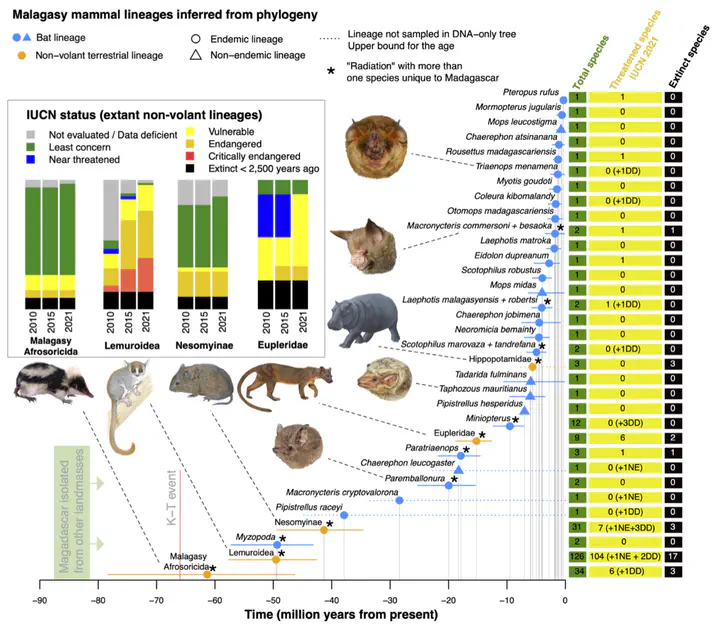The macroevolutionary impact of recent and imminent mammal extinctions on Madagascar
 Image credit: N.M. Michielsen. Lemur illustration copyright 2013 Stephen D. Nash / IUCN SSC Primate Specialist Group. Hippopotamus by Alexis Vlachos (courtesy George Lyras). All other illustrations copyright Velizar Simeonovski. Used with permission.
Image credit: N.M. Michielsen. Lemur illustration copyright 2013 Stephen D. Nash / IUCN SSC Primate Specialist Group. Hippopotamus by Alexis Vlachos (courtesy George Lyras). All other illustrations copyright Velizar Simeonovski. Used with permission.
Abstract
Many of Madagascar’s unique species are threatened with extinction. However, the severity of recent and potential extinctions in a global evolutionary context is unquantified. Here, we compile a phylogenetic dataset for the complete non-marine mammalian biota of Madagascar and estimate natural rates of extinction, colonization, and speciation. We measure how long it would take to restore Madagascar’s mammalian biodiversity under these rates, the “evolutionary return time” (ERT). At the time of human arrival there were approximately 250 species of mammals on Madagascar, resulting from 33 colonisation events (28 by bats), but at least 30 of these species have gone extinct since then. We show that the loss of currently threatened species would have a much deeper long-term impact than all the extinctions since human arrival. A return from current to pre-human diversity would take 1.6 million years (Myr) for bats, and 2.9 Myr for non-volant mammals. However, if species currently classified as threatened go extinct, the ERT rises to 2.9 Myr for bats and 23 Myr for non-volant mammals. Our results suggest that an extinction wave with deep evolutionary impact is imminent on Madagascar unless immediate conservation actions are taken.